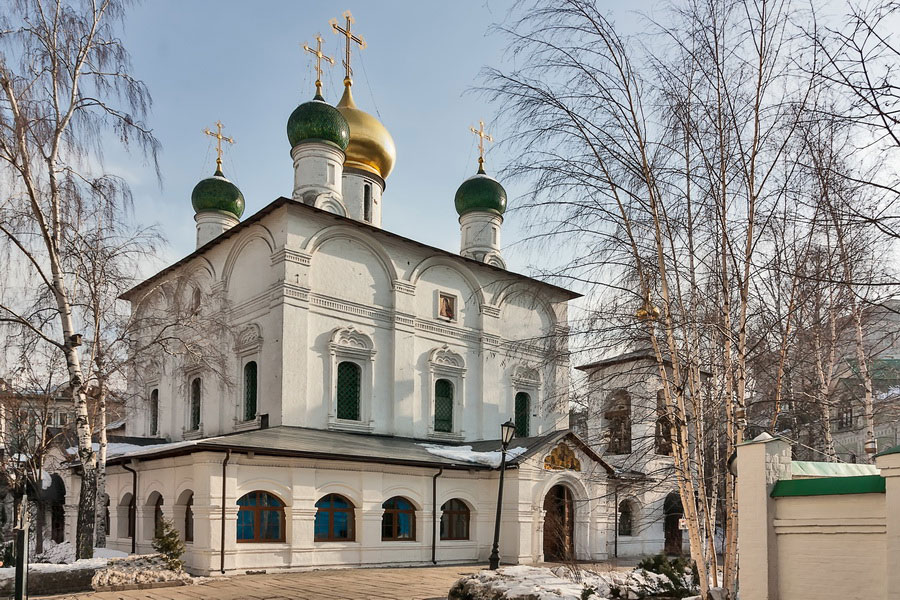
This monastery was named after the Vladimir Icon of the Mother of God, who in 1395 miraculously averted the troops of the Great Tamerlane from Moscow. When the danger was near, the icon was brought to Moscow from Vladimir. The place where Muscovites came out to meet the shrine was used for the monastery erection. Sretenye means meeting. The icon itself is now in the Tretyakov Gallery. The founder of the temple (in 1397) was Moscow Prince Vasily I, the son of Dmitry Donskoy. The stone Sretensky Cathedral was built there later. Next to it the church of Mary of Egypt was constructed. At the gates of the monastery in the late 17th century the temple of St. Nicholas and the bell tower were added. The mid-17th century was the time of special welfare of Sretensky Monastery. The royal family made valuable contributions to the monastery.
Sretensky Monastery was more than once in the center of tragic events of Russia's history: its walls witnessed the Salt Riot; its property was looted by the French during the Napoleonic invasion, and in 1917 its liquidation began. The monks were evicted from the monastery, the monastic cells were captured. In 1925 the monastery was closed. In 1958-1962 the cathedral was restored. The only surviving are the monastery church of the Presentation of the Vladimir Icon of Our Lady with the Nativity of John the Baptist Chapel built in 1679 by the decree of Tsar Fyodor Alekseevich. The temple features laconic and monumental architectural forms. In 1991 the services were resumed, monasticism restored. In 1993 the cathedral arranged the town church of Pskov-Pechora monastery converted into Sretensky Monastery.

